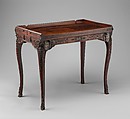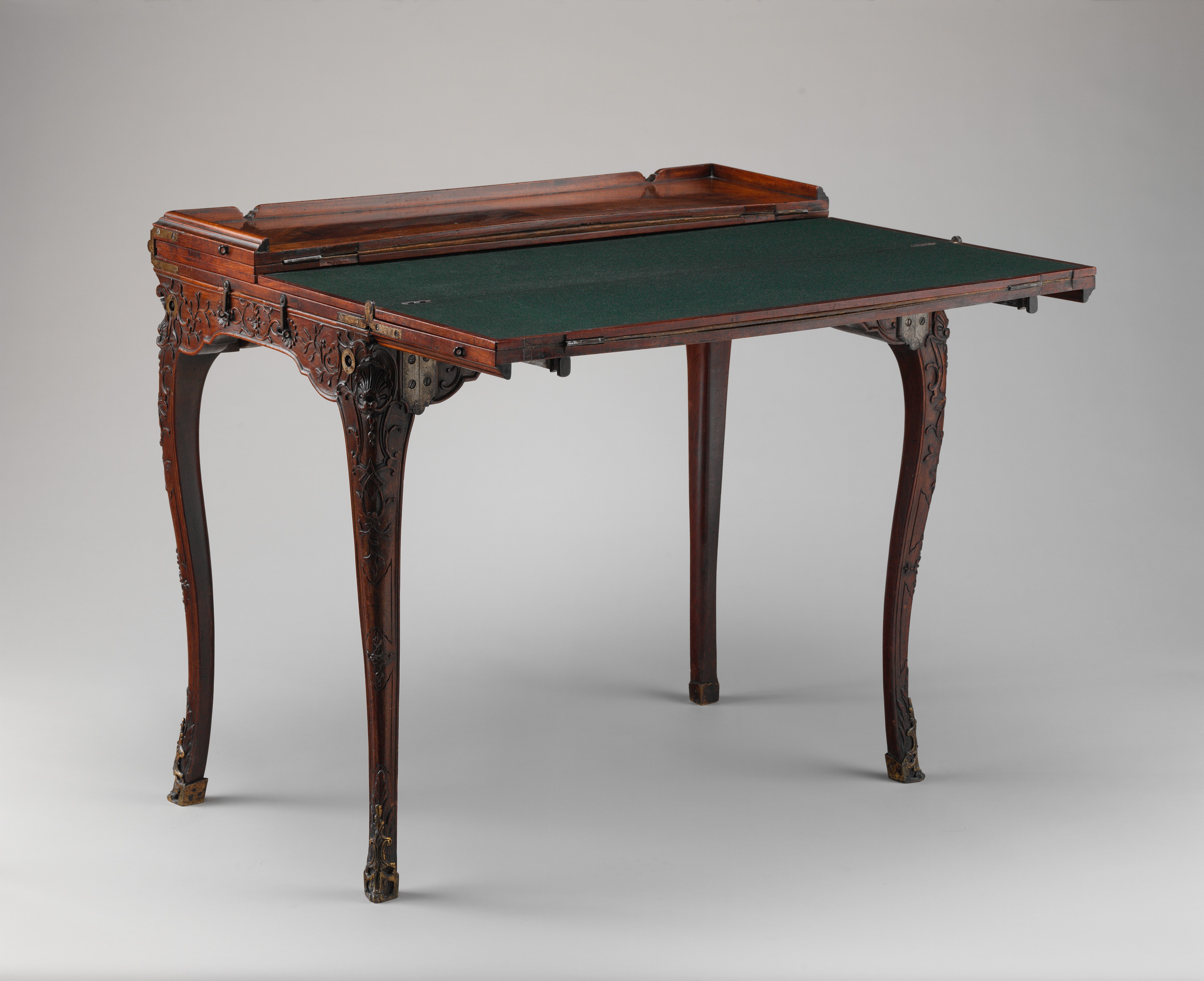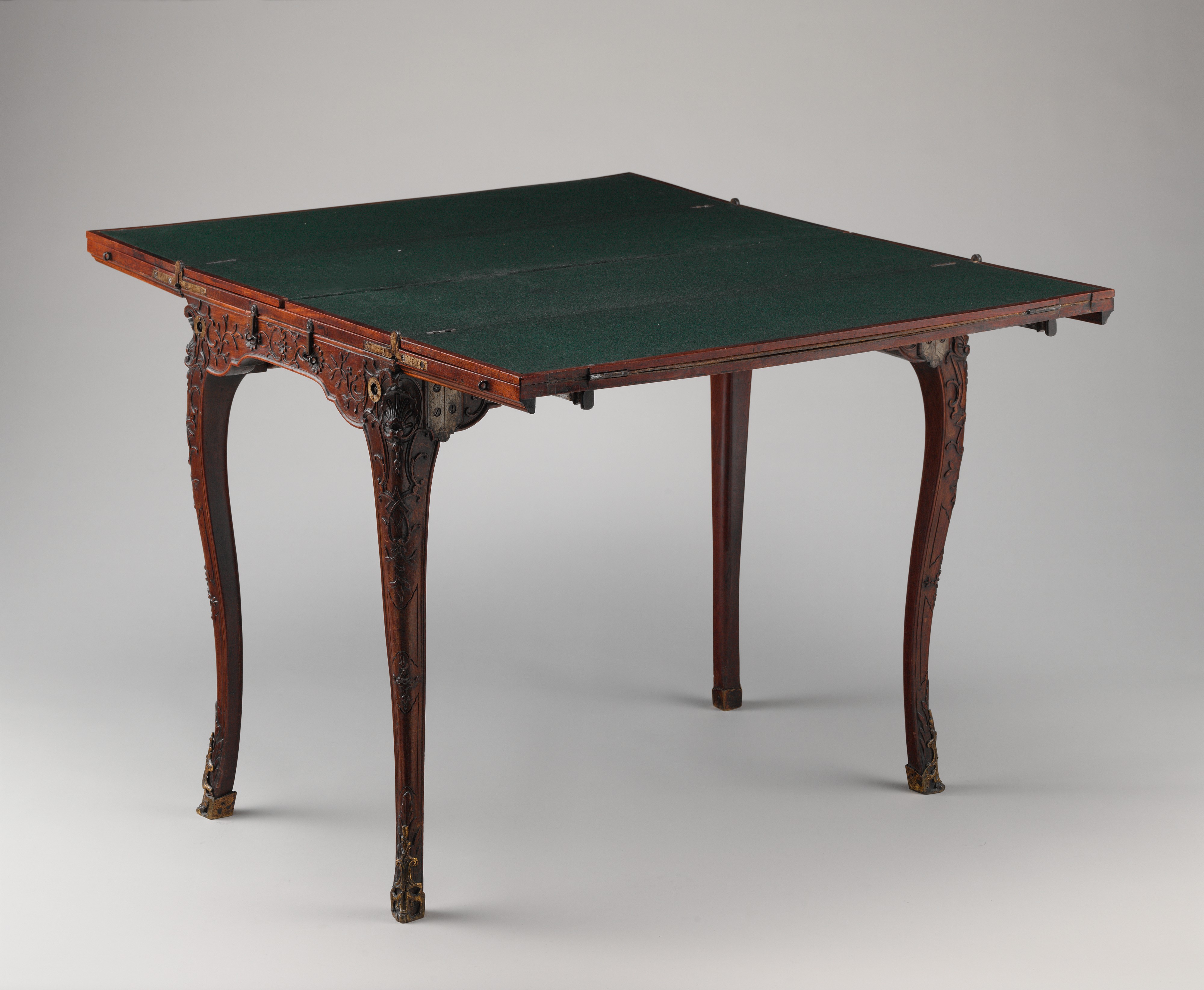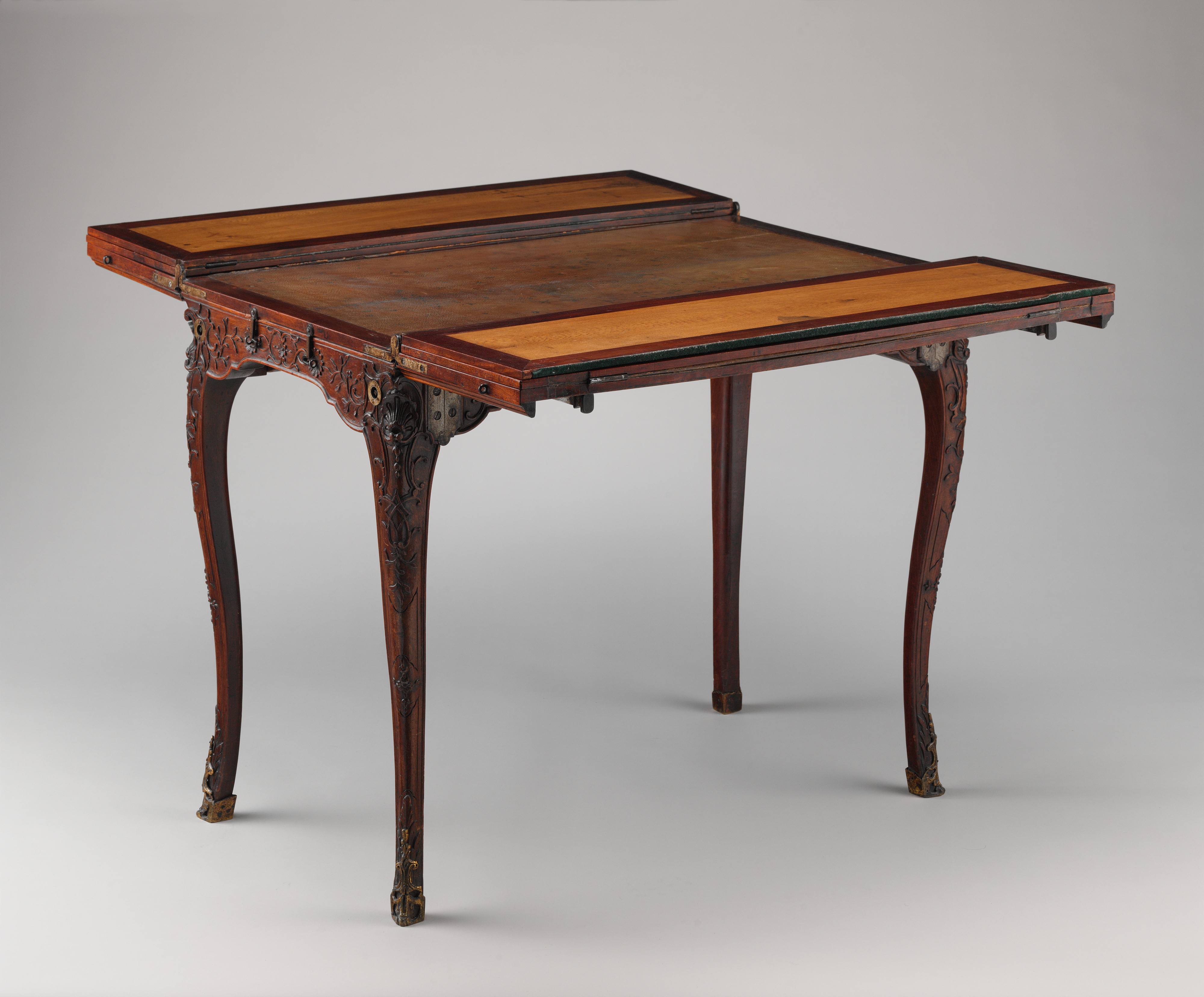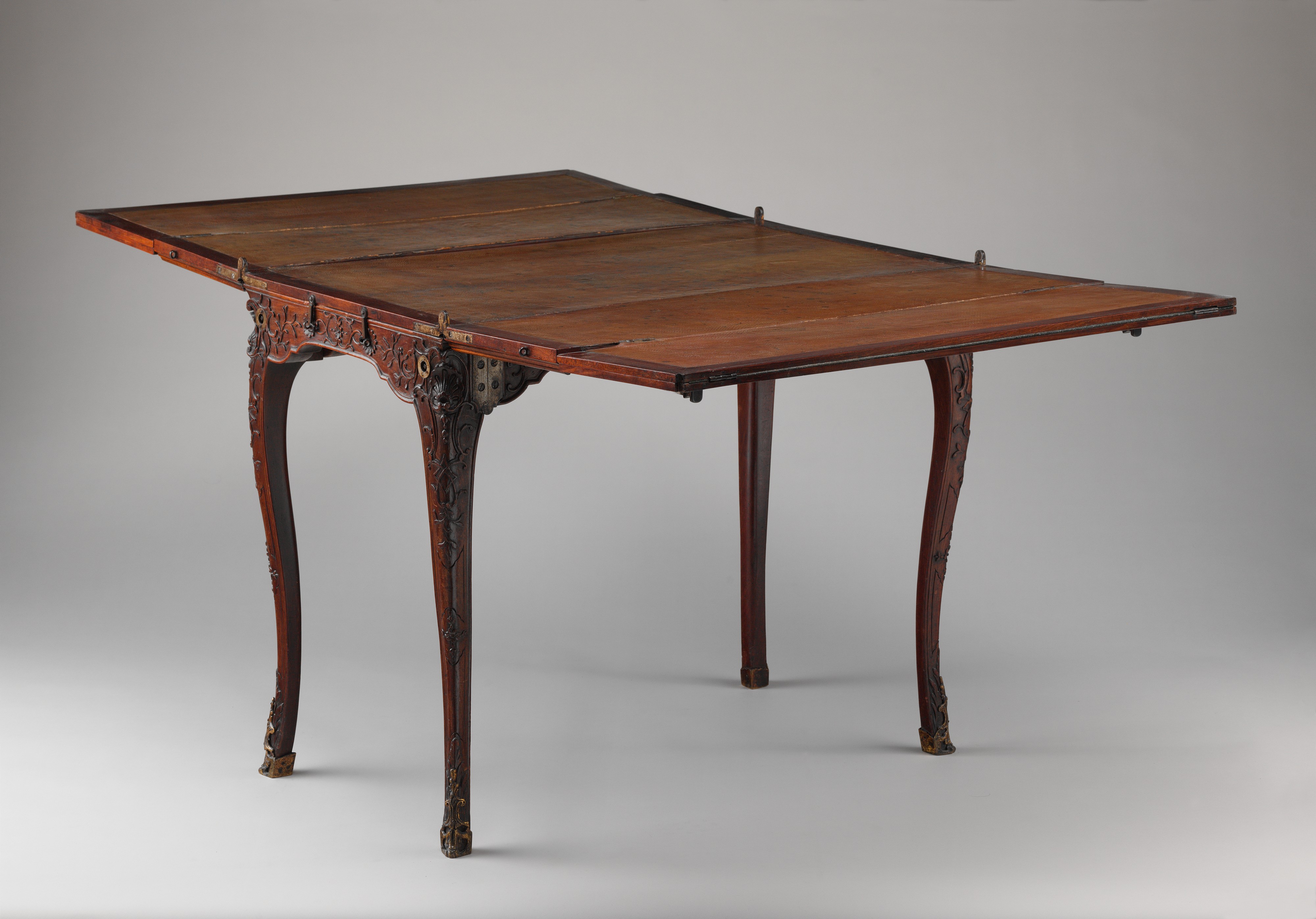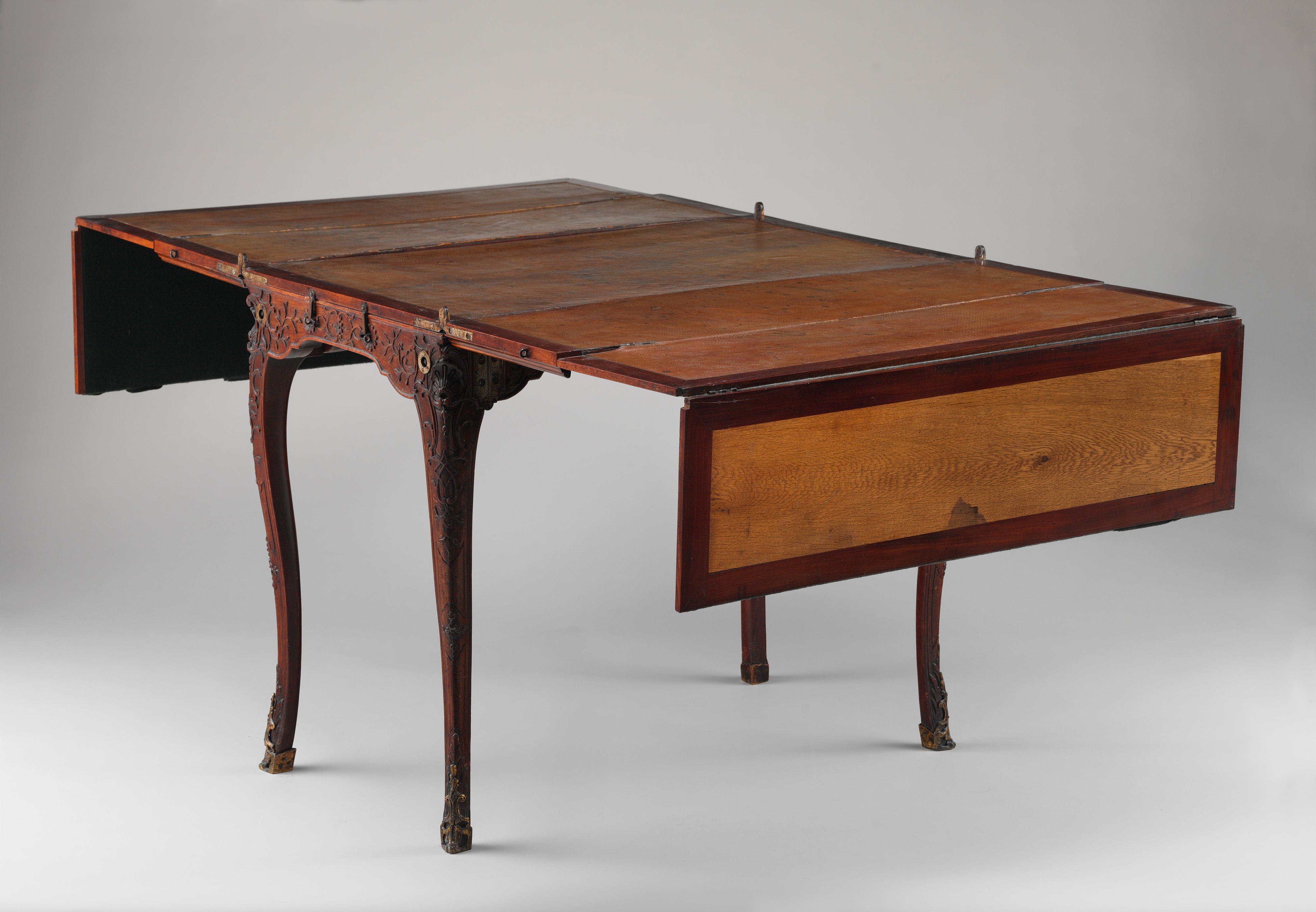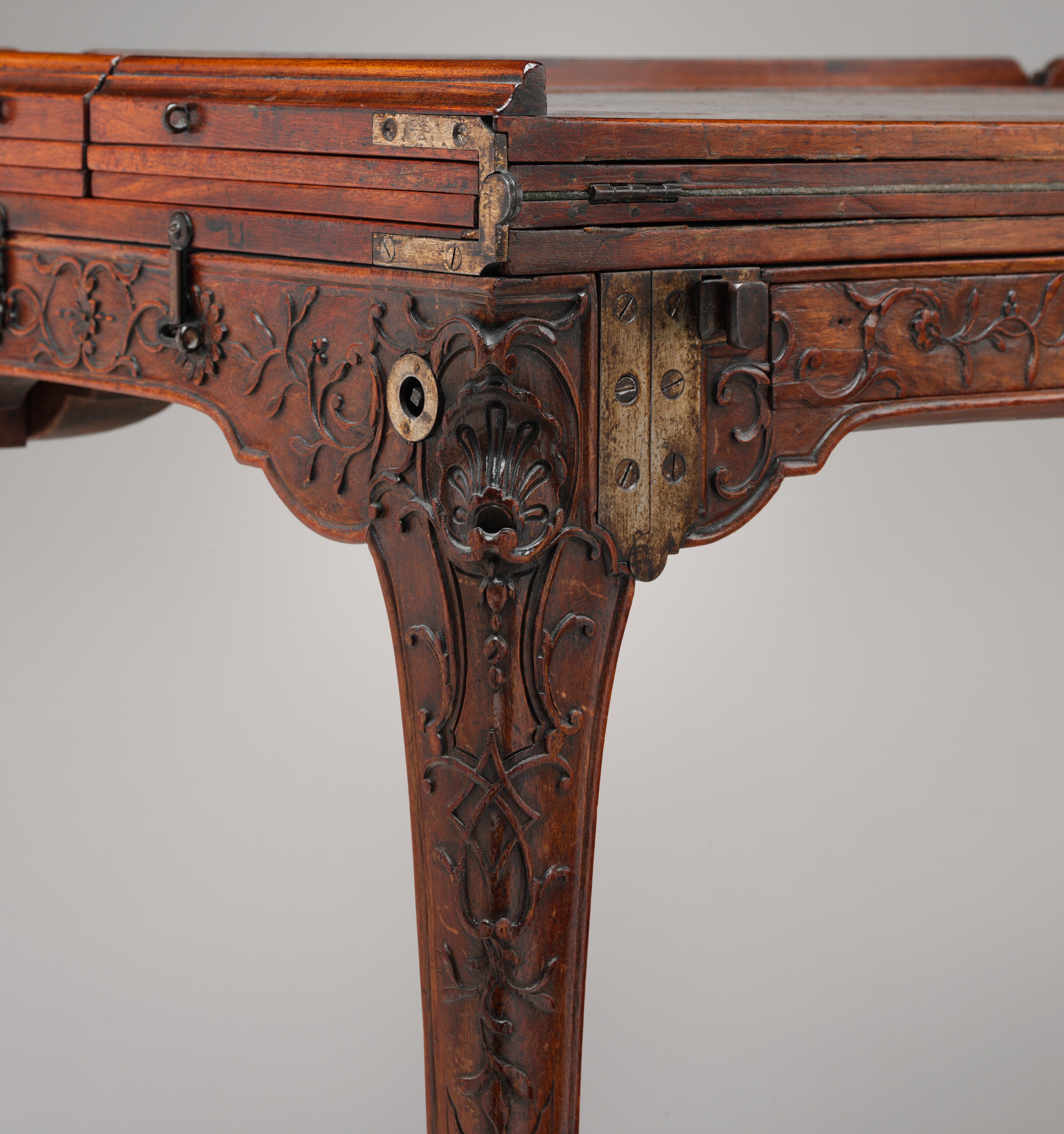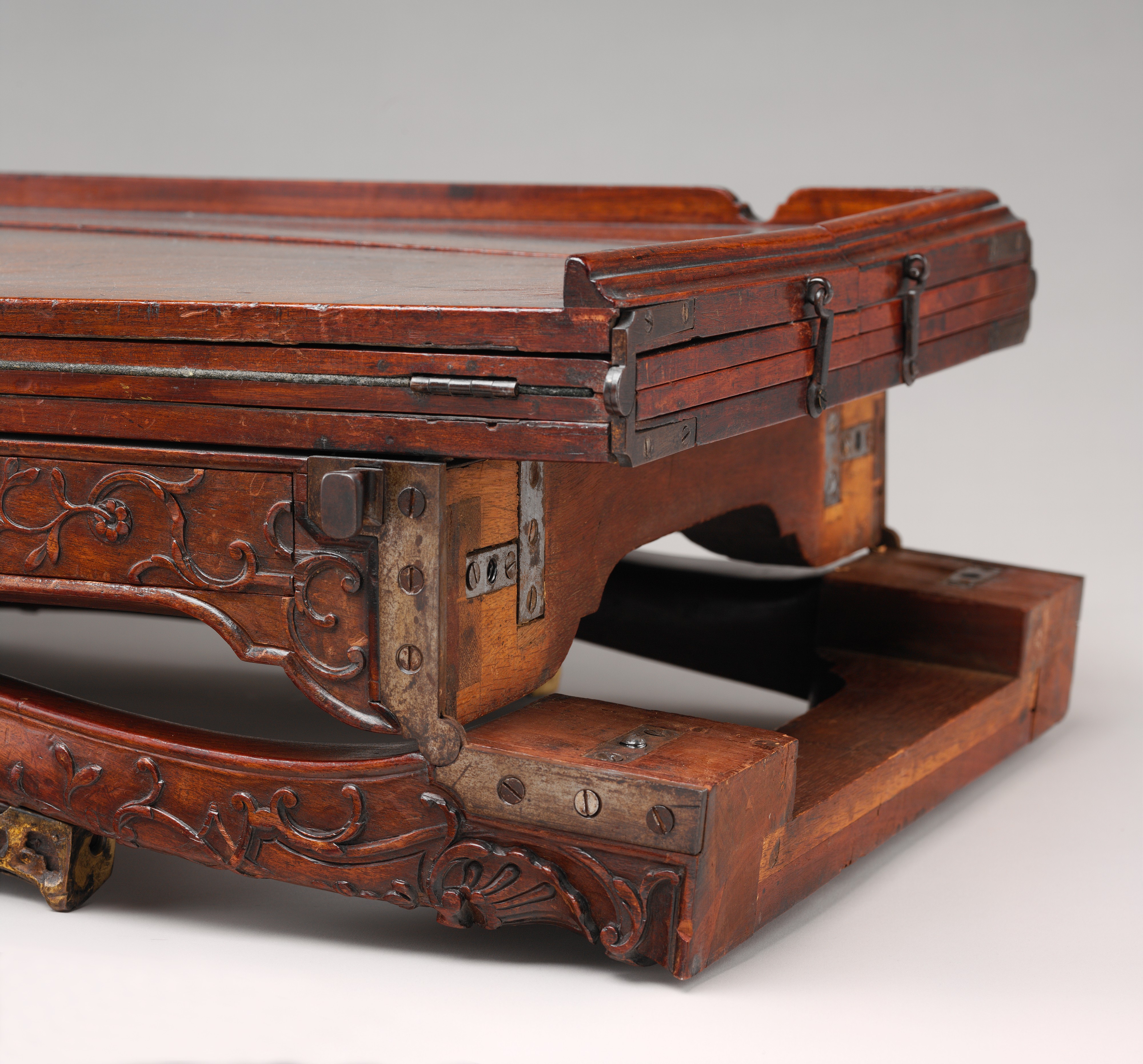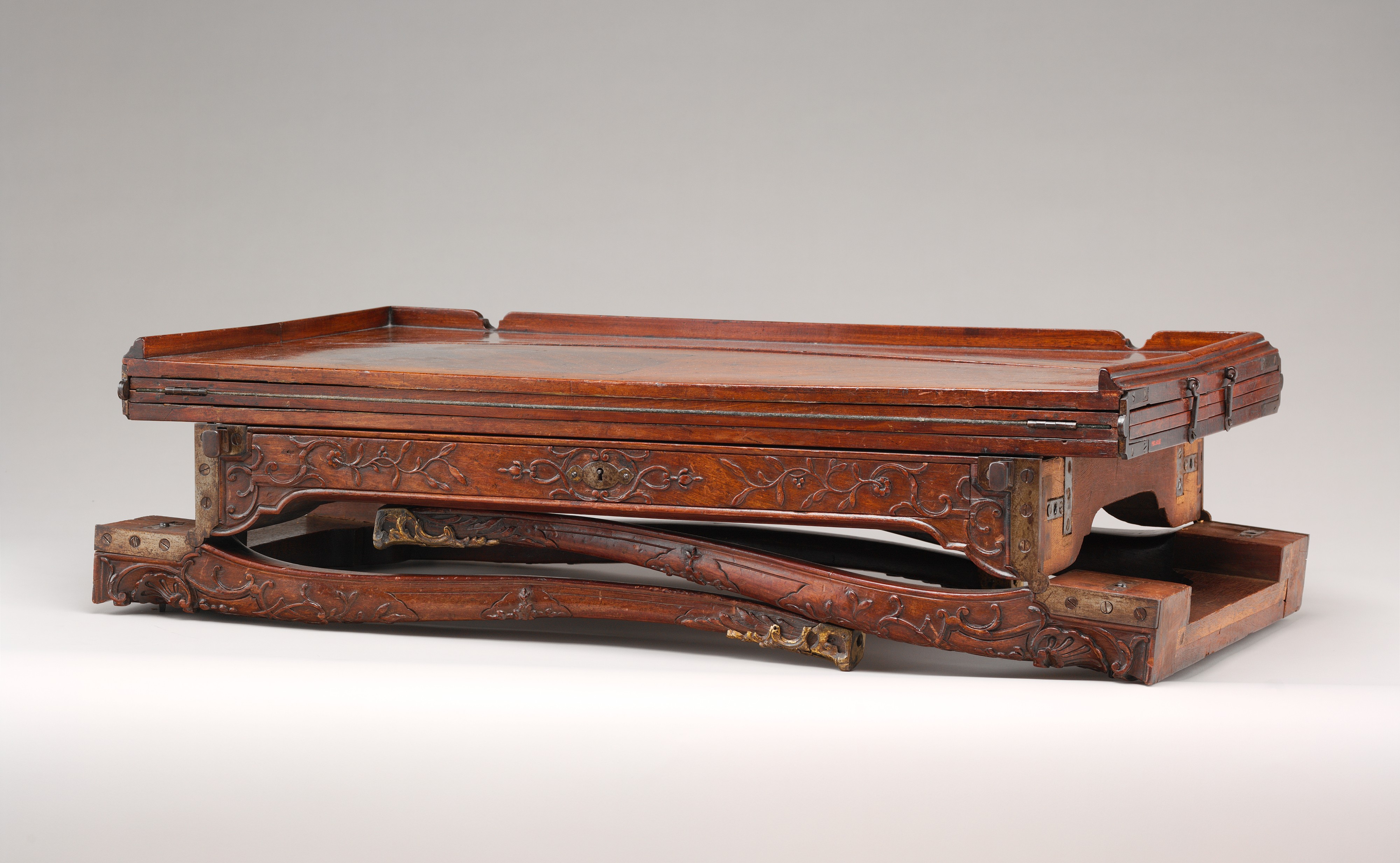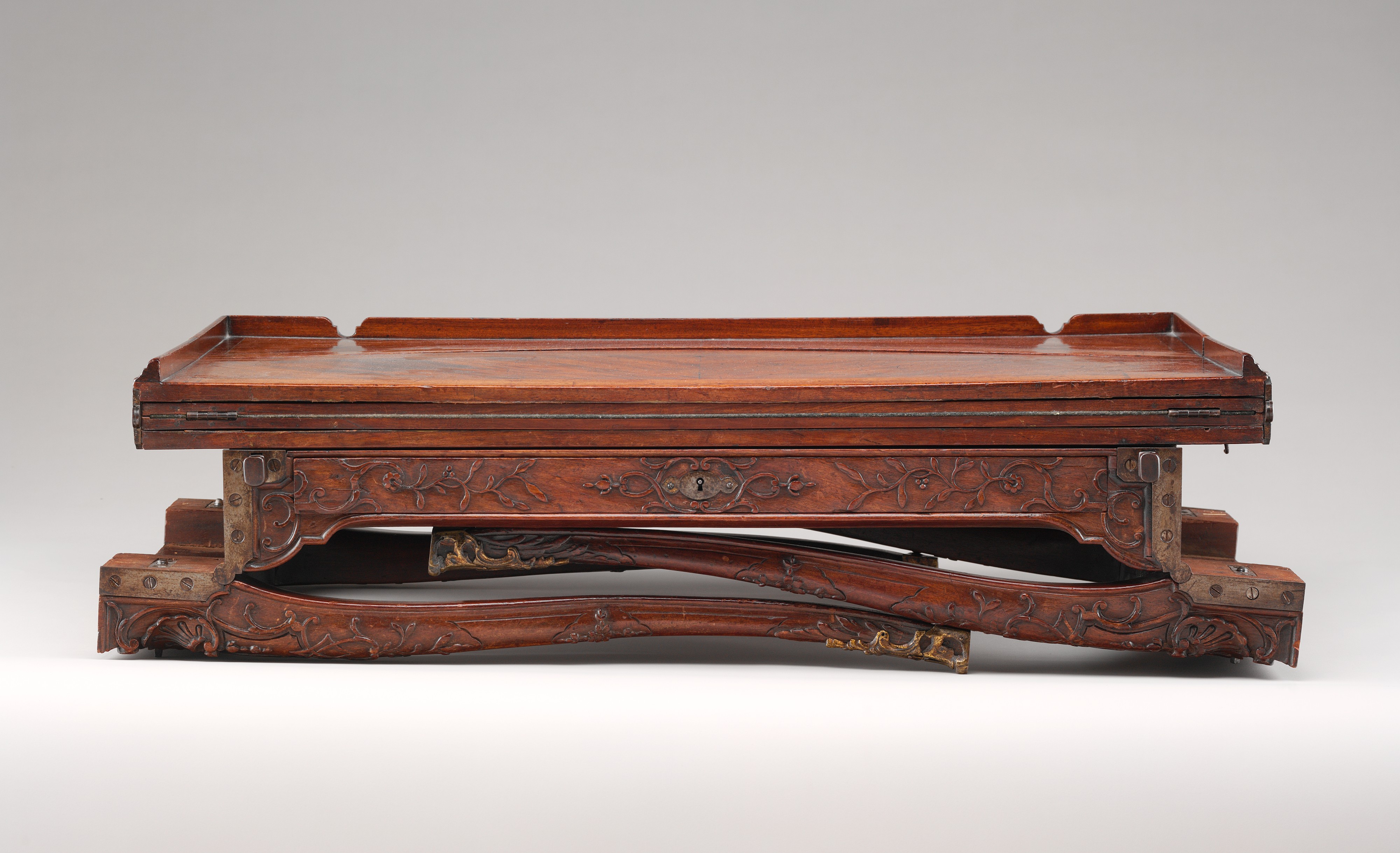Traveling table (table de voyage or table pliante)
The Château de Saint-Cloud, near Paris, belonged to the ducs d'Orléans until 1785. In the estate inventory of the furnishings in the rooms of Duchesse Élisabeth Charlotte (1652–1722), called Madame, sister-in-law of Louis XIV, there is mentioned a carved writing desk made of walnut on pieds de biche (doe's feet). The French term could be taken literally, because zoomorphic feet for furniture was a very fashionable conceit in the seventeenth century. But the term could also refer to the slim, stylized S-curved legs of late Louis XIV and early Régence style that suggest the sweetly elegant stance of the deer. This leg shape, seen also on the Museum's table, appeared about 1700 at the latest-certainly not in the Rococo period, as has long been maintained.[1]
This refined and ingeniously constructed table [2] is a very rare example of a type of multifunctional furniture that was specifically invented for rough and space-limited journeying via coach. Before the advent of the automobile, a traveler could not count on finding the comforts of home at a place where he found himself benighted or stranded by unforeseen events, such as a broken axle-a misfortune that occurred often on unpaved roads.
The fashionable pieds de biche of the Museum's table are hinged to the top and can be folded and locked underneath, making the piece easy to pack away.[3] When standing, it could be used for serving food and beverages, and the raised molding along three sides would prevent valuable and fragile items from sliding off the beautifully grained surface. The fine, flat-carved decoration on the apron conceals a drawer for storing utensils. The tabletop can be extended by unfolding several leaves on either side. These are supported by steel pullout bars. There is a surface covered with leather for writing and another covered with felt for playing cards or dicing. Fully extended, the table could accommodate a company of at least six diners. The legs are decorated with a highly sophisticated design of low-relief carving incorporating floral sprays, small fruits, shell motifs, and interlaced strapwork.
The only known walnut table with similar folding mechanisms is very close to this table in its measurements. It once belonged to the princes de Condé and is now in the Musée des Arts Décoratifs in Paris.[4]
[Wolfram Koeppe 2006]
Footnotes:
1. Wolfram Koeppe. "Möbel und Schaustücke." In Liselotte von der Pfalz: Madame am Hofe des Sonnenkönigs, ed. Sigrun Paas, pp. 179–88. Exh. cat., Heidelberger Schloss. Heidelberg, 1996, pp. 184-85, fig. 5.
2. Katharine Baetjer et al. "The Jack and Belle Linsky Collection in the The Metropolitan Museum of Art: Addenda to the Catalogue." Metropolitan Museum Journal 21 (1986), pp. 165-66, no. A.5 (entry by James Parker)
3. Yet another name for this type of table is table pliante, or folding table; Henry Havard. Dictionnaire de l'ameublement et de la décoration depuis le XVIIIe siècle jusqu'à nos jours. 4 vols. Paris, 1887–90, vol. 4, col. 1208.
4. Yvonne Brunhammer, ed. Cent chefs-d'oeuvre du Musée des Arts Décoratifs. Exh. cat., Pavillon de Marsan, Palais du Louvre. Paris, 1964, p. 64; Pierre Kjellberg. Le mobilier français. Vol. I, Du Moyen Âge à Louis XV. Vol. 2, De la transition Louis XV–XVI à 1925. Paris, 1978–80, vol. 1, fig. 117; and Pierre Verlet. Les meubles français du XVIIIe siècle. 2nd ed. Paris, 1982, p. 132, fig. 29.
Due to rights restrictions, this image cannot be enlarged, viewed at full screen, or downloaded.
This artwork is meant to be viewed from right to left. Scroll left to view more.
